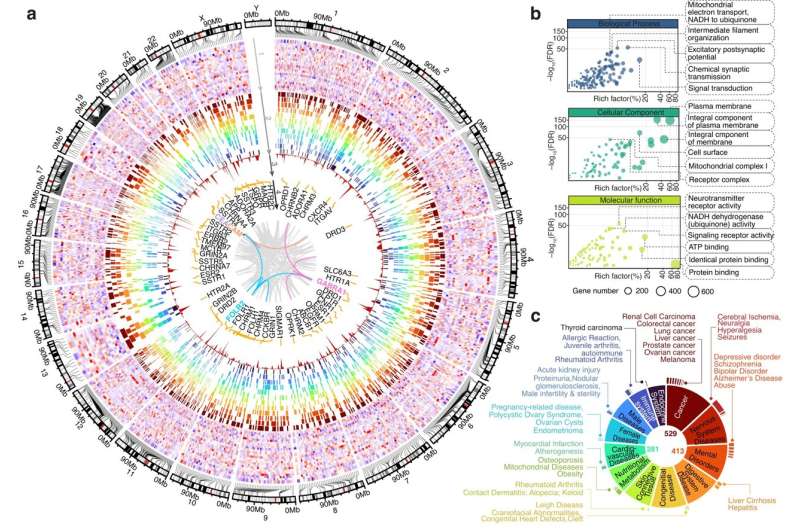This article has been reviewed according to Science X's editorial process and policies. Editors have highlighted the following attributes while ensuring the content's credibility:
fact-checked
peer-reviewed publication
proofread
Researchers introduce genome-based imaging for medical diagnostics

Imaging techniques such as computed tomography (CT) or positron emission tomography (PET) are indispensable today for the diagnosis and localization of many diseases. A newly developed procedure now enables PET to be used specifically on the basis of changes in the human genome.
The new genome-based imaging has the potential for the earlier diagnosis of cancer, heart disease and dementia, as well as for a wide variety of other diseases. The researchers describe their findings in their article "The Imageable Genome," which was published in mid-November in the journal Nature Communications.
The identification of the 'Imageable Genome'
The decoding of the human genome has long been considered a gateway to the early diagnosis of cancer, heart disease and neurological disorders. However, one of the main problems remained the translation of new genomic findings into easily applicable medical tests such as imaging. The first description of the "Imageable Genome," as the researchers call their method, now provides a solution to this problem.
"The Imageable Genome represents the part of the human genome whose expression can be assessed with medical imaging," explains Prof Dr. Martin Walter, titular professor of medical sciences at the University of Lucerne and specialist in nuclear medicine at the Hirslanden Klinik St. Anna, who led the research group. "It changes during the development and progression of practically every human disease." In order to describe the Imageable Genome, the research team had to develop new methods that bridge the gap between big data, genomics and medical imaging.
"Our first task was to identify every single gene of the Imageable Genome in the existing medical literature, which comprises several million publications," says Dr. Pablo Jané from the University Hospital of Geneva. To this end, Jané has developed a method that combines human and artificial intelligence and records and processes the entire published medical literature. This development consecutively allowed to describe the complete Imageable Genome.
Clinical application of the new method
"Our second task was to find out whether the Imageable Genome enables new diagnostic tests for human diseases," says Dr. Xioaying Xu from the University of Lucerne, under whose lead the Imageable Genome was correlated with individual genomic data from more than 60,000 patients. Thereby, the researchers identified new testing options that can help to better diagnose, localize and ultimately treat a wide range of human diseases, particularly in neurology, cardiology and oncology.
"The final step," adds the research team's lead radiochemist, Dr. Taelman from the University of Lucerne, "was to identify those imaging tests that are best suited to putting the new method into practice and thus bringing tangible benefits to the patient."
To demonstrate the broad applicability of their approach, the researchers identified new imaging tests for Alzheimer's disease, bipolar disorder, schizophrenia, coronary heart disease, various forms of cardiomyopathy and a variety of different tumors, among others, in their publication.
"We see the Imageable Genome as a key with which new findings from genomics can be translated into imaging procedures," says Martin Walter. "With this key, we see great potential for further medical research and innovations in the field of big data and artificial intelligence," Walter continues.
More information: Pablo Jané et al, The Imageable Genome, Nature Communications (2023). DOI: 10.1038/s41467-023-43123-3



















